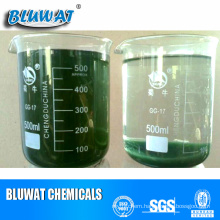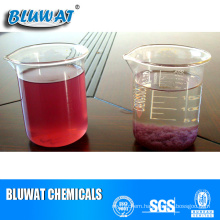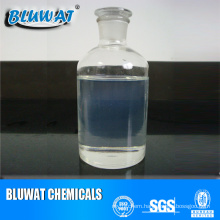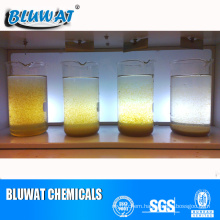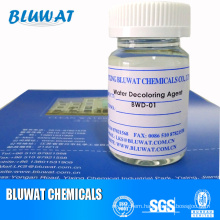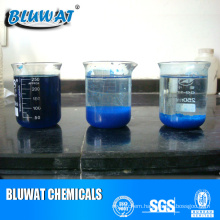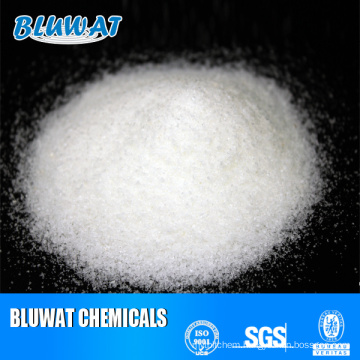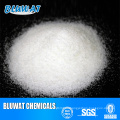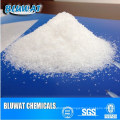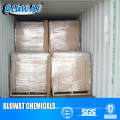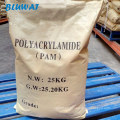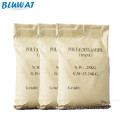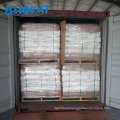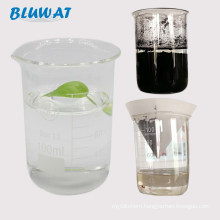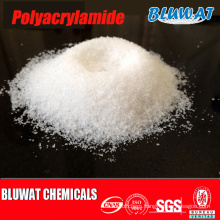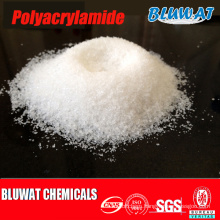High Molecular Polymer Flocculant for Water Treatment and Paper Mills
Product Description
High Molecular Polymer Flocculants
Polyacrylamide is a floocculant, simply called PAM, a water- soluble high polymer. There are three categories of anionic, cationic and non-ionic type.
Application:
PAM Series products contain affinity radical and they can dissolve in water easily and play the role of flocculation, filtering-assist, increasing adherence, reducing resistance, coherence, reinforcing and rheologic regulation and can be used extensively. Flocculation property can be used for recovering solid substance, treating various industrial sewage, domestic sewage and purifying water, assisting filtering, treatment of tail coal as well as well-drilling slurry material etc. With the rheologic regulation function PAM can thicken water recover driving agent for oil field to reform ground section, enhance adoption ratio.
It can make up fracturing solution to fracture the stratum which is difficult to drill and it also can make up well-drilling solution which can reduce friction and resistance, accelerate drilling speed, improve drilling depth. With the property of adherence and reinforcing of PAM, it can be used for paper-making industry to enhance staying rate of filling material, speed size filterability and white water sediment in the paper and then coagulate to increase the strength of the paper. PAM can be used with polyvinyl alcohol as textile size, this can improve textile process and enhance the property of textile.
Usage:
1. Anionic PAM is suitable for higher density, inorganic suspension substance with positive charge and pH value is neutral of basic solution with thick suspension particles 1mm-10mm.
2. Cationic PAM is suitable for suspension solution with negative charge and containing organic substance.
3. Non-ionic PAM is suitable for separating mixed organic and inorganic suspension, the solution is neutral or acid.
Dissolution of polyacrylamide
1, Dissolved water: Low hardness of water with PH as neutral is recommended to use; Groundwater and water dissolving inorganic substance or excessive metal ions is easy to reduce product performance.
2, Dissolution time: The dry powder products can play their best performance when used after dissolved for one hour (non-ionic dry powder products are recommended to dissolve for more than two hours).
3, Dissolution concentration: The general dissolution concentration of cationic products is 0.2% (feasible for 0.1%~0.5%); The dissolution concentration of anionic and non-ionic products is 0.1% (feasible for 0.05%~0.5%).
4, Dissolution should be conducted in the grooves made of materials of plastic, ceramic and stainless steel, for which the stirring speed should not be too fast. The centrifugal pump and other high-shear rotor pump should be avoided during conveying of dilute solution, and it is best to use screw pump and other low-shear pump.
The dissolution conditions are relatively special for flocculants used in aluminum oxide technology, and on-site technical guidance is required.
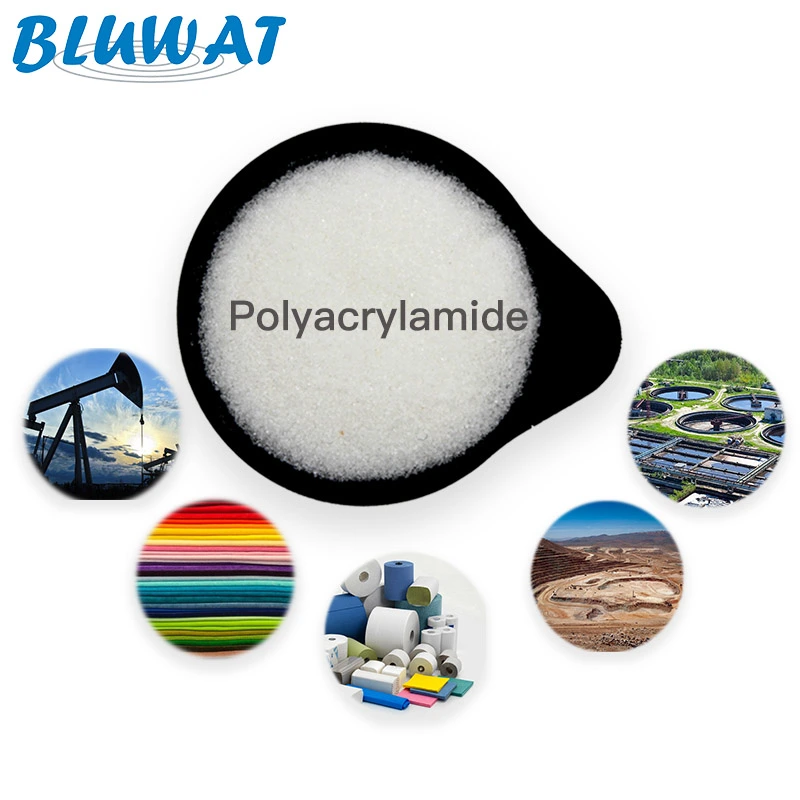
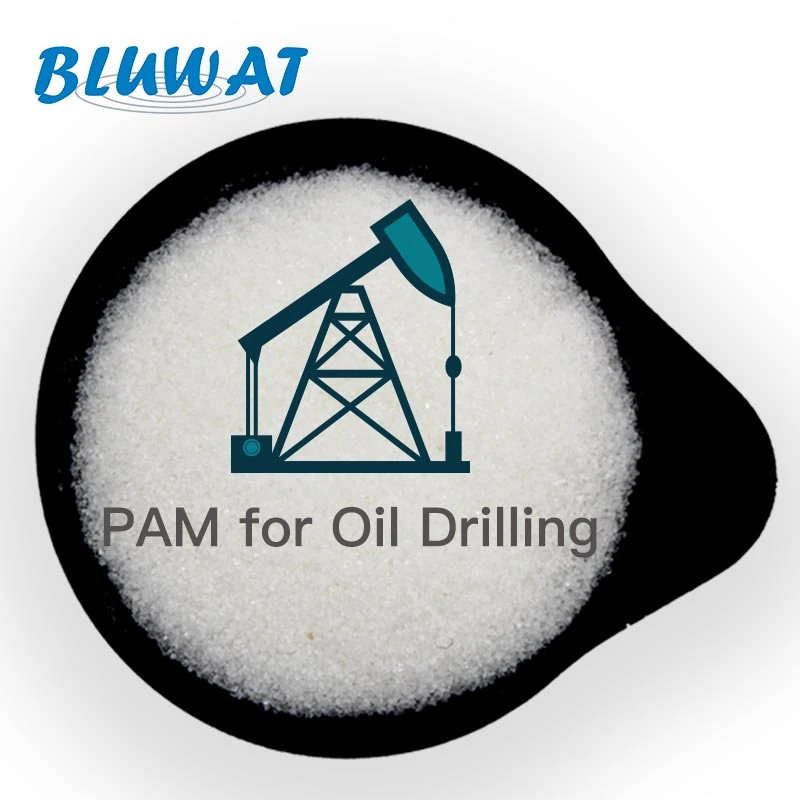


Polyacrylamide is a floocculant, simply called PAM, a water- soluble high polymer. There are three categories of anionic, cationic and non-ionic type.
| Brand | Type | Molecular weight | Ionic degree |
| Blufloc | Anionic | 5-22 million | 10%-50% |
| Blufloc | Cationic | 7-15 million | 5%-60% |
| Blufloc | Non-ionic | 6-10 million | < 5% |
Application:
PAM Series products contain affinity radical and they can dissolve in water easily and play the role of flocculation, filtering-assist, increasing adherence, reducing resistance, coherence, reinforcing and rheologic regulation and can be used extensively. Flocculation property can be used for recovering solid substance, treating various industrial sewage, domestic sewage and purifying water, assisting filtering, treatment of tail coal as well as well-drilling slurry material etc. With the rheologic regulation function PAM can thicken water recover driving agent for oil field to reform ground section, enhance adoption ratio.
It can make up fracturing solution to fracture the stratum which is difficult to drill and it also can make up well-drilling solution which can reduce friction and resistance, accelerate drilling speed, improve drilling depth. With the property of adherence and reinforcing of PAM, it can be used for paper-making industry to enhance staying rate of filling material, speed size filterability and white water sediment in the paper and then coagulate to increase the strength of the paper. PAM can be used with polyvinyl alcohol as textile size, this can improve textile process and enhance the property of textile.
Usage:
1. Anionic PAM is suitable for higher density, inorganic suspension substance with positive charge and pH value is neutral of basic solution with thick suspension particles 1mm-10mm.
2. Cationic PAM is suitable for suspension solution with negative charge and containing organic substance.
3. Non-ionic PAM is suitable for separating mixed organic and inorganic suspension, the solution is neutral or acid.
Dissolution of polyacrylamide
1, Dissolved water: Low hardness of water with PH as neutral is recommended to use; Groundwater and water dissolving inorganic substance or excessive metal ions is easy to reduce product performance.
2, Dissolution time: The dry powder products can play their best performance when used after dissolved for one hour (non-ionic dry powder products are recommended to dissolve for more than two hours).
3, Dissolution concentration: The general dissolution concentration of cationic products is 0.2% (feasible for 0.1%~0.5%); The dissolution concentration of anionic and non-ionic products is 0.1% (feasible for 0.05%~0.5%).
4, Dissolution should be conducted in the grooves made of materials of plastic, ceramic and stainless steel, for which the stirring speed should not be too fast. The centrifugal pump and other high-shear rotor pump should be avoided during conveying of dilute solution, and it is best to use screw pump and other low-shear pump.
The dissolution conditions are relatively special for flocculants used in aluminum oxide technology, and on-site technical guidance is required.




Product Categories : Polyacrylamide / Polyelectrolyte / PHPA
Other Products
Hot Products
Paint fog flocculant Coagulant for for spray booth remove paintACH Liquid Aluminium Hydroxychloride 50%Deodorizing Agents to remove smell Chemical Auxiliary Agent n1Rubber product wastewater treatment rubber deodorant odor controlFood grade aluminium ammonium sulfate/ammonia alum/ammonium alumHigh Quality Poly dadmac Water TreatmentFormaldehyde free fixing agent Excellent stabilityDEODORIZING AGENT to remove bad smell BacteriaCleanwater CW-05 High Quality Water Decoloring Agent For Thailand Dyeing IndustryOrganic Coagulant PolyDADMAC for Effluent TreatmentDecolor Agentwater treatment chemicals polymer polyamineNew Price Effluent Decolorant ChemicalsPAC Polyaluminium Chloride10% Liquid PAC in high purityPolyacrylamide

